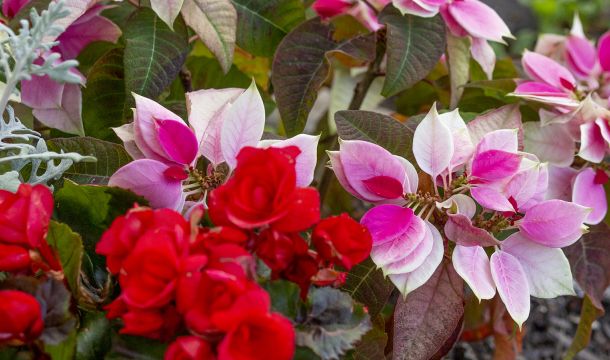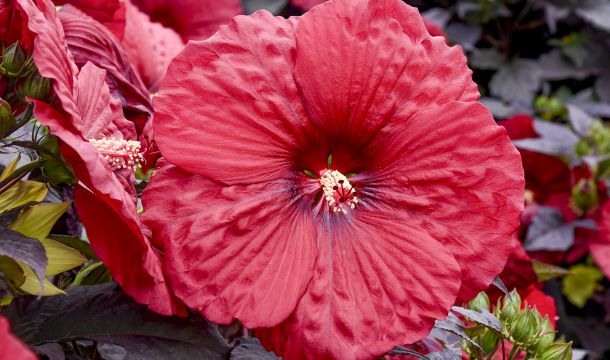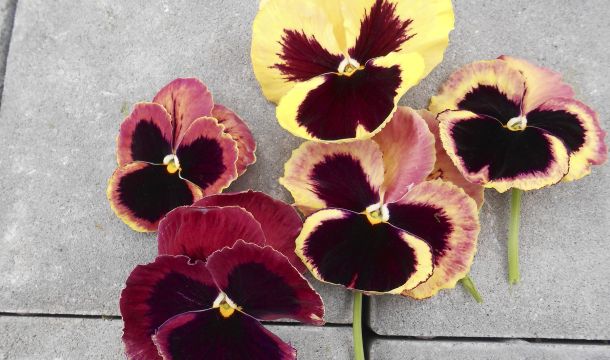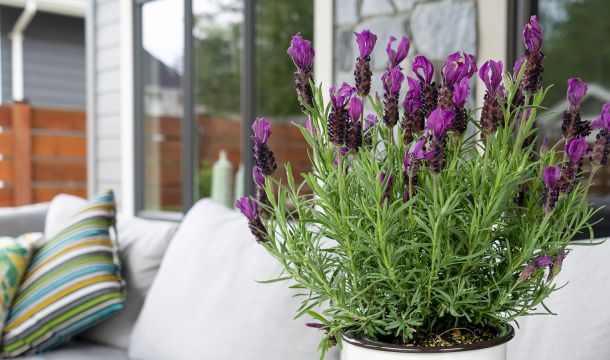Spotlight on Princettias

The most intriguing cultivars came from Suntory’s Princettia, also available from Dümmen Orange (way in the back of the catalog). These poinsettias grow out very differently: multi-tone leaves walk in a zipper style along curving, wandering stems. No other spring annual offers this look and that color mix stays until frost, much longer than other poinsettias I’ve planted.
In the United States, we usually find them in 4-inch pots, although Princettia ‘Queen Pink’ is the big one, better suited for 6-inch pots. Princettia is a miniature poinsettia that translates well to bedding plant sizes, so I use this series as low color or filler in between larger perennials. You need to turn to other varieties if you want big volume or a tall presence.
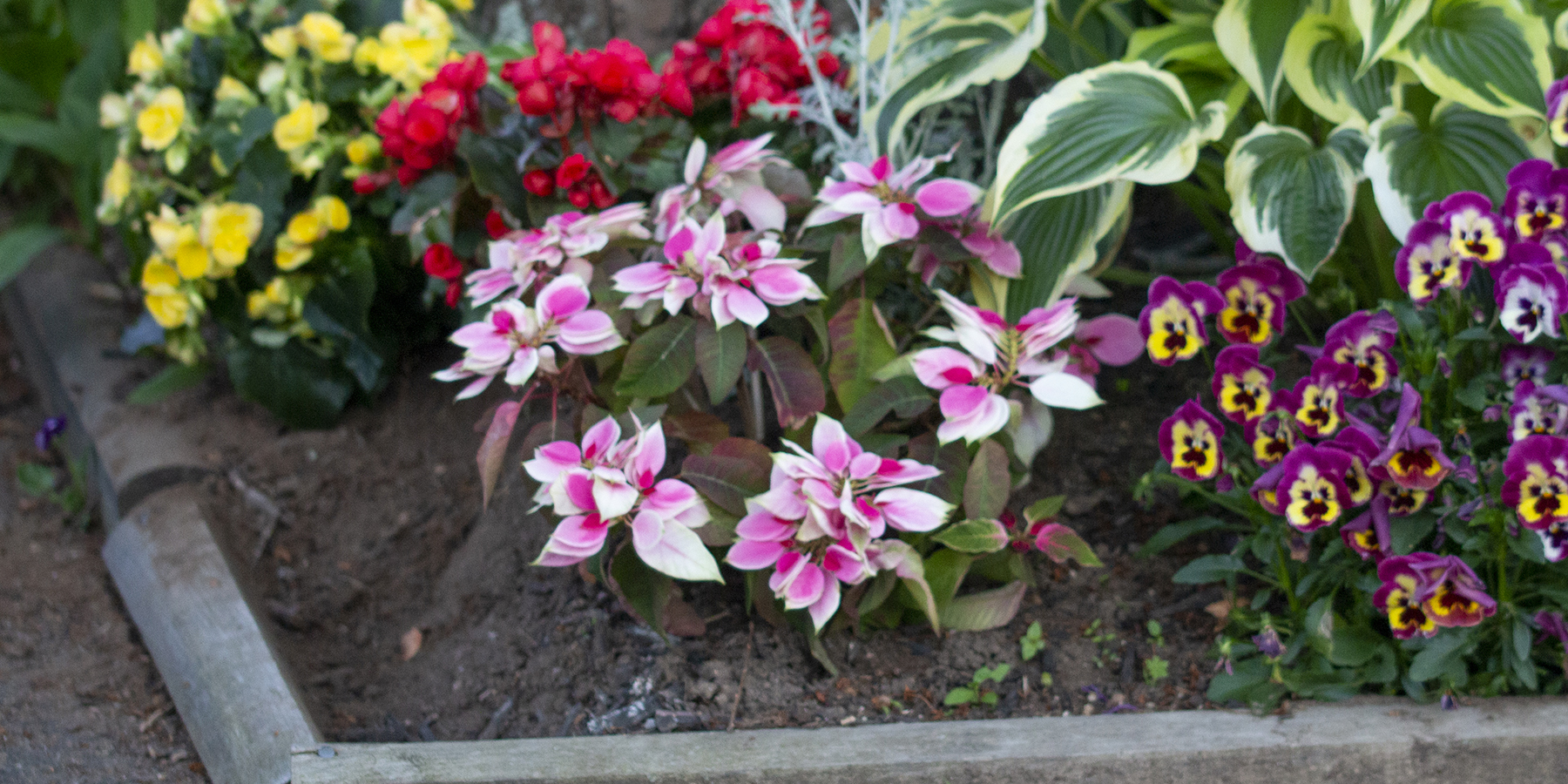
My Princettias did best in dry shade like this garden under an ornamental cherry tree. They got the same care as the tuberous begonias, ‘First Frost’ and ‘Delta Wine & Cheese’.
Spring Timing
I live in Connecticut, so I can usually get my Princettias into the ground around the time the daffodils bloom and the perennial geraniums start to color up for the season. They do best in full or mostly shade gardens, or even a dry garden under the cherry tree where the shade keeps the sun off the bracts and leaves. More sun will green up the leaves and fade away the color.
Other varieties like to push up new shoots of green and drop their previous colors. Not Princettias—they hang onto their current color-filled bracts, then extend their growing stem further out where new bracts keep emerging. This creates their signature zipper tracks of color.
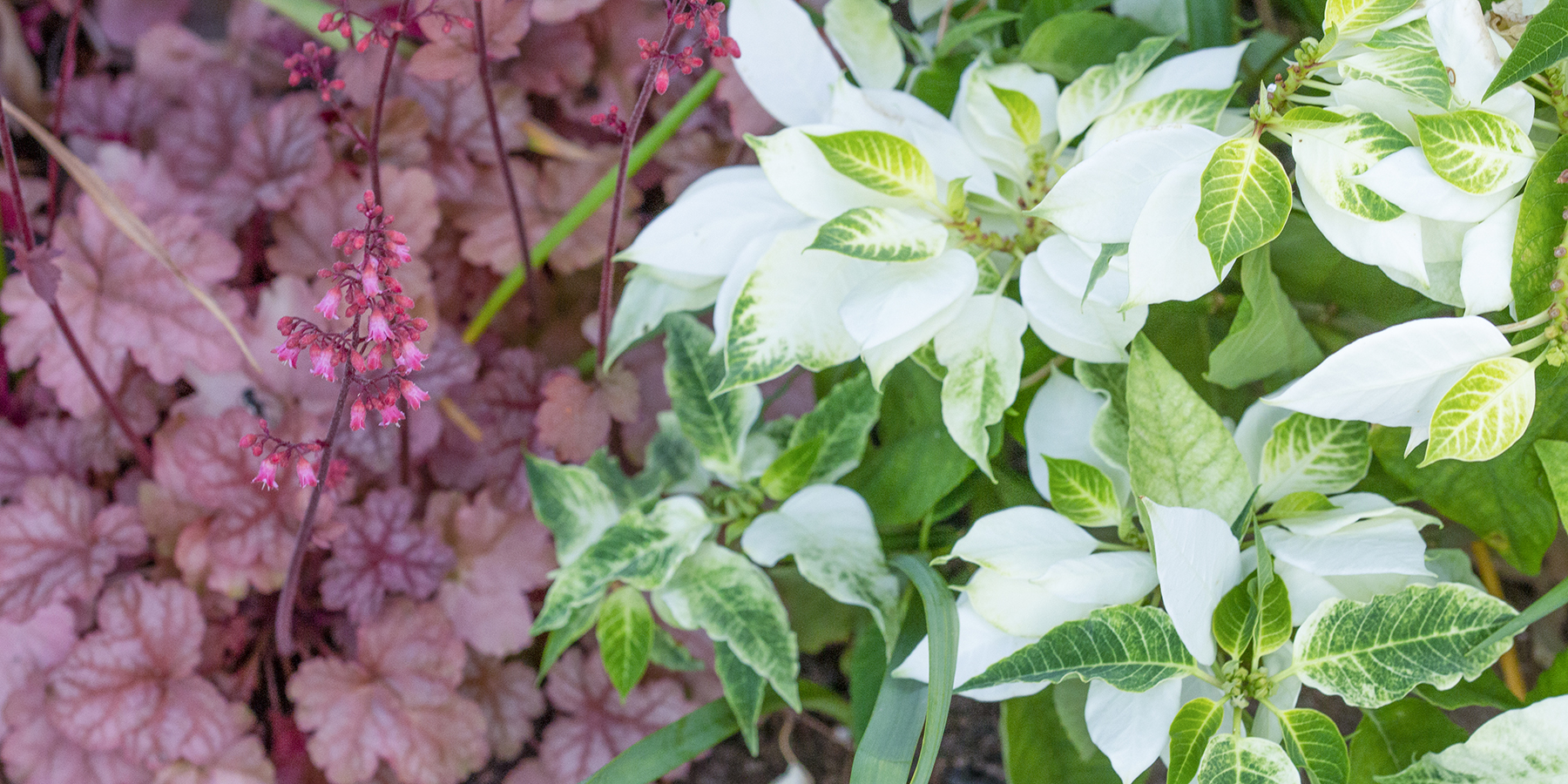
Princettia ‘Pure White’ likes the same garden setting as Heuchera ‘Peach Flambe’.
The un-Christmas Poinsettia
As a result, none of my visitors ever pegged the Princettias for what they began as—poinsettias. They always noticed and talked about the plants as cool, neat, different, unusual, etc., but I had to fill them in on the origin story. Then they raised their eyebrows. In many ways, I think Princettias should sell as summer euphorbias to move them away from the novelty of Christmas in July. Nothing else in the spring or summer looks like Princettias, and bright whites, pinks, and reds are tough to find for deep shade. I think these plants could break away from the Christmas pack and compete on their own merits.
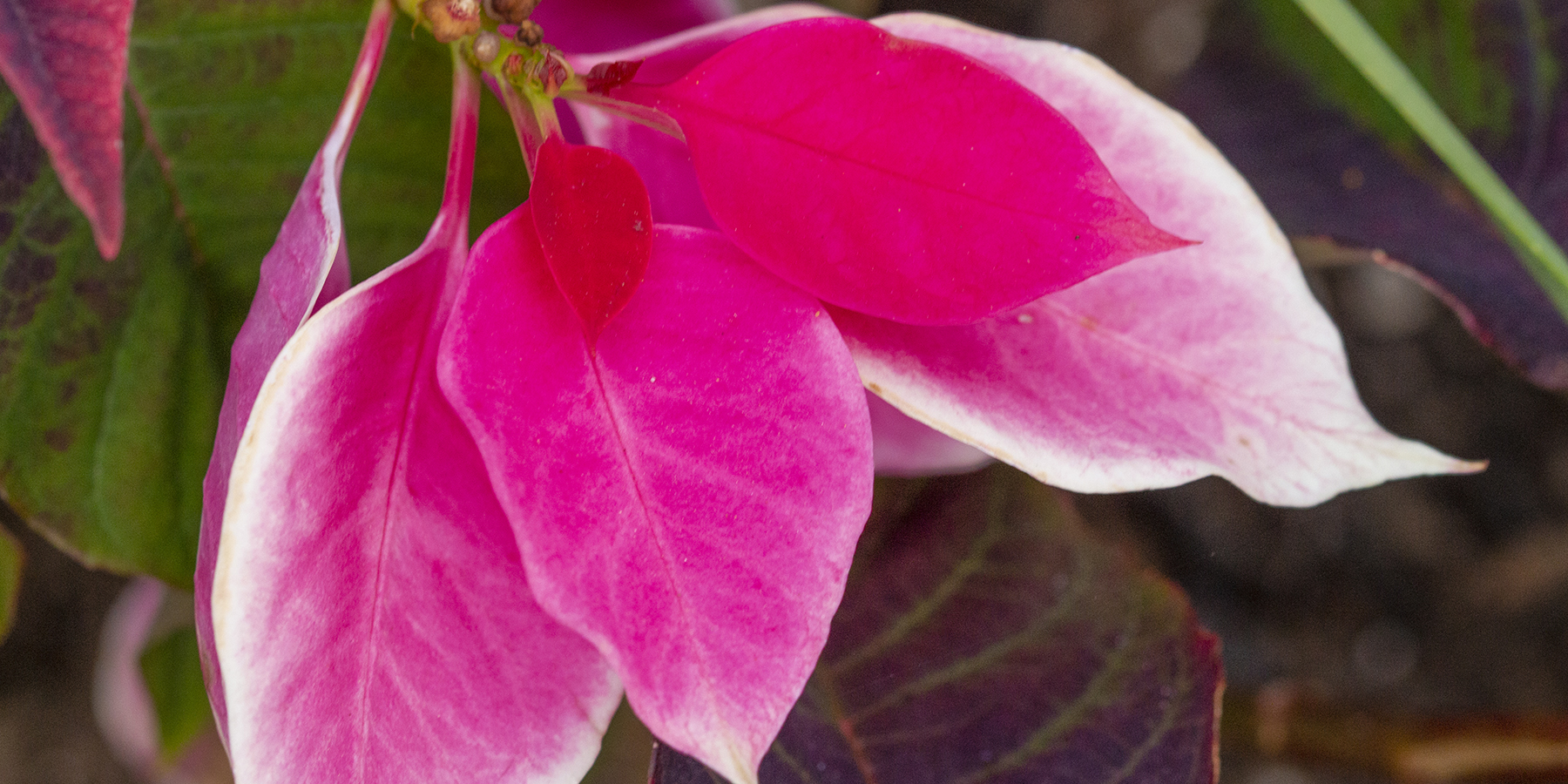
The layered tones of a typical Princettia bract in spring and summer.
Popular Articles

Trialing Edible Baskets

The Arthouse Expansion of Agastaches

The Strengths Behind Phlox Subulata
